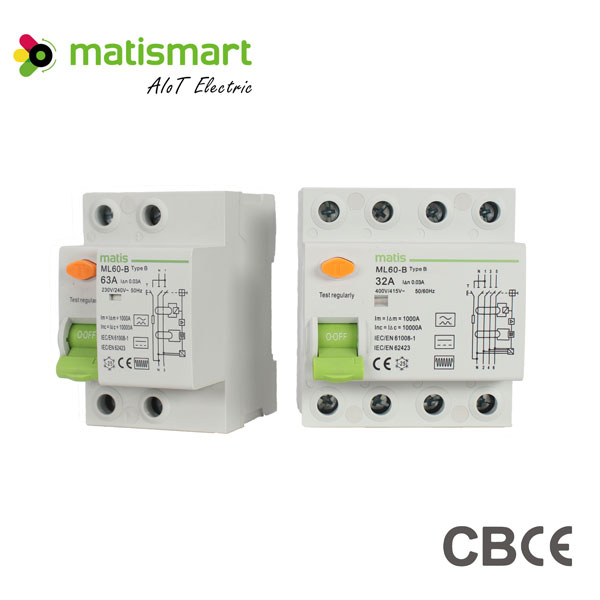Understanding the Different Types of RCCBs for Electrical Circuits
2023/06/09 丨Technical
Residual Current Circuit Breaker : Introduction to Residual Current Devices
If you work with electrical circuits, you've probably heard of RCCBs (Residual Current Circuit Breakers). RCCBs are designed to protect people and equipment from electric shock by interrupting circuits when dangerous fault current flows through them. In this blog post, we will discuss the different types of RCCBs, how they work, and their various applications in electrical systems.
Fault Currents: The Need for RCCBs
When an electrical fault occurs, it generates a fault current that flows through the electrical system. This current can be caused by different reasons such as short circuit, overload or ground fault. Fault currents are dangerous to people and equipment. For example, a ground fault can cause electrical current to flow through the body, causing electrocution and electrocution. An overload or short circuit can cause a fire or damage equipment connected to the circuit.
To prevent these hazards, RCCBs are installed in the circuit. An RCCB is a circuit breaker that detects residual current flowing between a live conductor and an earthed conductor. Whenever the fault current exceeds the RCCB's rated trip current, it trips and interrupts power to the circuit.
Residual Current Devices (RCDs) : Types and Applications
There are different types of RCCBs on the market today. The most common are:
- Two-pole RCCBs
- A two-pole RCCB is used to protect single-phase and three-phase circuits. It can handle a maximum voltage of 440 V and a rated current of up to 100 A. It comprises two poles that monitor the current flow in both live conductors. When the residual current exceeds the RCCB's rated tripping current, it trips and shuts down the power supply.
- Four-pole RCCBs
- A four-pole RCCB is used to protect three-phase circuits and equipment that require a neutral connection. It can handle a maximum voltage of 440 V and a rated current of up to 100 A. It comprises four poles that monitor the current flow in all three live conductors and the neutral conductor. When the residual current exceeds the RCCB's rated tripping current, it trips and cuts off the power.
- Type A RCCBs
- A type A RCCB is designed to protect against residual currents that are sinusoidal AC or pulsed DC. It can handle a maximum voltage of 440 V and a rated current of up to 63 A. It is commonly used in residential and commercial buildings because it can protect against electric shock caused by indirect contact with current-carrying conductors.
- Type B RCCBs
- A type B RCCB is designed to protect against residual currents that are sinusoidal ac, pulsed dc, and smooth dc. It can handle a maximum voltage of 440 V and a rated current of up to 63 A. It is commonly used in industrial and medical settings because it can detect and protect against direct and indirect contact with current-carrying conductors.

Conclusion
In summary, RCCBs are vital components in electrical systems that protect against dangerous fault currents that can cause electric shock, equipment damage, and fire. There are various types of RCCBs, each with its applications and functions. Picking the right RCCB for your system depends on factors such as circuit type, current rating, and voltage. Comprehending the different types of RCCBs can help you make the right choice for your electrical safety needs.
- Solutions
- Products & Support
- Cases
- About us
- Contact
TEL:+86 18621879631
Email:timmy@matismart.com
Mobile phone:+86 15801814653
Address:Room 320, No.83, Huanhu West Road 3, Pudong, Shanghai, China, 201306
Wechat:+86-15801814653
Skype:timmybao2008
 沪ICP备09024882号-1
沪ICP备09024882号-1




 CN
CN





 Home
Home
